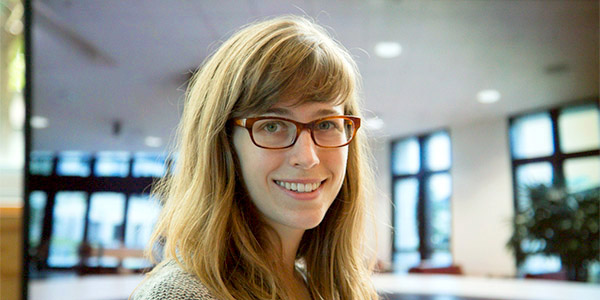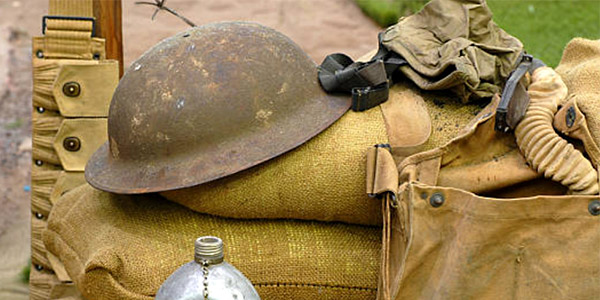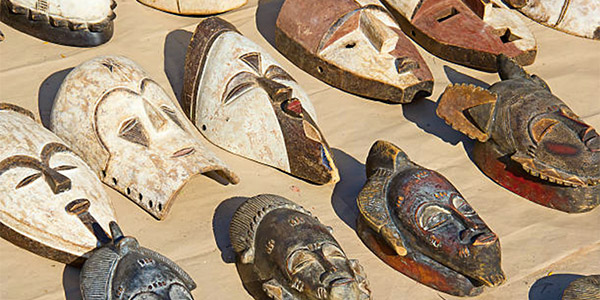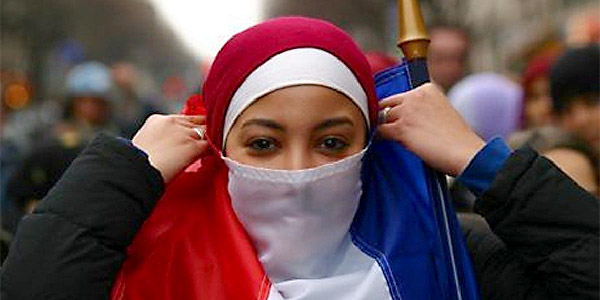THE MEANINGS OF MASKS
The Masks of Empire, Art, Politics, and War
Historian Catherine Clark on masks in modern European history

Catherine Clark, MIT Associate Professor of History; photo by Jon Sachs
"Ultimately, history reminds us that masks can produce meaning whether they sit on our faces or our kitchen tables."
— Catherine Clark, MIT Associate Professor of History
SERIES | THE MEANINGS OF MASKS
As The Washington Post has reported, "at the heart of the dismal US coronavirus response" is a "fraught relationship with masks." With this series of commentaries — inspired by ideas from Associate Professor of Literature Sandy Alexandre — MIT faculty explore the myriad historic, creative, and cultural meanings of masks to offer new ways to think about, appreciate, and practice protective masking — currently a primary way to contain the Covid-19 pandemic.
Catherine Clark is an associate professor of history and French studies at MIT. A cultural historian of modern Europe, she writes widely about the histories of modern France and its visual culture. She is the author of Paris and the Cliché of History (Oxford University Press, 2018), which won the 2018-19 Laurence Wylie Prize in French Cultural Studies. SHASS Communications interviewed Clark in August 2020.
• • •
Q: Humans use masks for a variety of purposes, ranging from protection to artful and ceremonial performance. What are some important examples of masks and masking drawn from your research focus in early modern cultural history.
A: The history of 20th century Europe offers up many examples of masks and masking. The examples that I have thought of most often in the past months were used during and after World War I.
The masks of war
In 1915, poison gas was fired at Allied troops in the trenches for the first time. In the wake of this catastrophic development, the gas mask became essential protective gear. English poet Wilfred Owen wrote powerfully of the fumbling with masks that followed the battlefield call “Gas! Gas! Quick, boys!” John Singer Sargent painted the soldiers who failed to heed the warning in time: a line of straight-backed young men, their eyes bound in white bandages, each blindly holding the shoulder of the man in front of him, walking through a sickly yellow landscape.
Gas masks weren’t the only facial coverings of the war. Many WWI soldiers survived terrible facial injuries from shrapnel and machine gun fire. Some underwent new forms of facial reconstruction, but others, known in French as gueules cassées or literally, broken faces, could not be helped by plastic surgery (or chose not to be). These men often wore prosthetic masks, made by teams of artists and doctors out of rubber and, later, lightweight metals, to deflect public stares. An American sculptor, Anna Coleman Watts Ladd, for example, ran the Studio for Portrait Masks in Paris.

WWI-era gas mask and other gear; Stock photo
In the wake of the catastrophic gas attacks of WWI, the gas mask became essential protective gear. English poet Wilfred Owen wrote powerfully of the fumbling with masks that followed the battlefield call "Gas! Gas! Quick, boys!"
Given this history, it’s not surprising that masks reemerged in the run-up to WWII. Fearing mass gas attacks on civilians, the British in 1938 issued protective gear to every citizen — including the youngest. The Germans never dropped poison gas on the British Isles during World War II, and so the masks distributed by the British government in the late 1930s went mostly unworn. Owning them, however, must have made people feel safer.
Emblems of empire and art
Other historic masks have generated meaning without such practical intent. Masks made for a variety of uses in Africa, Asia, and the Americas circulated in 20th century Europe as art; instead of being held or worn, they hung on walls and sat on shelves in homes, offices, artist studios, and museums. Europeans bought masks from dealers and collected them on their travels throughout the world — acquiring them as part of the unequal and violent exchanges of formal and informal empire.
Once home they served a variety of purposes. For intellectuals, owning such masks might signal a certain worldliness. In the offices of politicians and business leaders, they announced links to colonial empires and their markets. Artists like Constantin Brâncuși and Pablo Picasso drew inspiration from masks, as well as from other forms of sculpture, as they experimented with perspective and form.

Wooden masks at an African street market; iStock photo
"Masks made for a variety of uses in Africa, Asia, and the Americas circulated in 20th century Europe as art; instead of being held or worn, they hung on walls and sat on shelves in homes, offices, artist studios, and museums... [acquired] as part of the unequal and violent exchanges of formal and informal empire."
When in Paris, I like to go to the Centre Pompidou to see a reconstructed wall from Surrealist André Breton’s studio, which like any good 20th century cabinet of curiosities contains several such masks. Museums, including the Museum of Man in Paris, the Pitt Rivers in Oxford, England, and the Ethnological Museum of Berlin, amassed huge collections of masks. The public came to look at them with wonder, and scholars studied them and wove them into narratives (used to support the unequal relationships of empire) about human cultures and evolution.
Ultimately, history reminds us that there is much more to masking than uplifting stories of creative play. Masks can protect and harm and produce meaning whether they sit on our faces or our kitchen tables.
Q: Many countries have adopted mask-wearing as a politically neutral health measure, but in the United States, mask-wearing has been adopted more enthusiastically by liberals, while many conservatives have fought their use. Can you comment on this political division?
A: Mask-wearing is a new marker of American political divisions, but in France facial coverings have long been at the heart of political debates. In 2011, France banned individuals from the public wearing of the niqab or burka, both garments typically worn by Muslim women that cover the wearer’s face. This ban built on a 2004 law that forbade ostentatious religious symbols in public schools.
These symbols might include Christian crosses or kippas/yarmulkes (head coverings worn by Jews), but public debates about the law centered on the Muslim veil as incompatible with the secular values of the French Republic, which purports to offer its citizens not “freedom of religion” as in the United States but “freedom from religion.”

A French woman deploys the tricolored flag as a niqab (face covering); stock photo
"This spring, masks became mandatory in public in France, and yet, the burka and niqab remained banned. At the same time, in the U.S., many people of color described not feeling safe wearing masks, even needed protective masks, in public."
Politicians and intellectuals who have supported banning the veil in public treat it as much more than a religious symbol. In a 2009 speech, then President Nicolas Sarkozy declared that the burka was “not welcome in France. In our country, we can't accept women prisoners behind a screen, cut off from all social life, deprived of all identity. That's not our idea of freedom.”
This spring, protective masks became mandatory in public in France, and yet, the burka and niqab remained banned. International commentators were quick to point out this seeming contradiction. French journalist Rokhaya Diallo wrote an op-ed in Al Jazeera saying that the move laid bare the state’s “hypocrisy.” At the same time, in the United States, many people of color described not feeling safe wearing masks, even needed protective masks, in public. These two cases, while based in very different issues, reveal the degree to which politics, cultural norms, and bias dictate not just who can go mask-less, but also who can cover their faces and how.
Q: What is the favorite mask you have ever worn, or seen someone else wear? Why did it appeal to you?
A: The most meaningful mask I’ve worn was not one but a series of masks, standard issue from the hospital, that I wore while giving birth to my son in April. They didn’t look like anything special, but they certainly witnessed a special event.
Suggested links
Book:
Paris and the Cliché of History (Oxford University Press, 2018)
News Story:
What Paris shows us about the history of photography
Clark's book develops a new narrative about photography and the ways we use it, from the place where it all began.
Awards:
Catherine Clark receives Mellon Fellowship
Clark's book, Paris and the Cliché of History awarded the 2018-19 Laurence Wylie Prize in French Cultural Studies.
Prepared by MIT SHASS Communications
Series Editor and Designer: Emily Hiestand
Consulting Editor: Kathryn O'Neill
Photograph of Catherine Clark: Jon Sachs
Published 30 August 2020